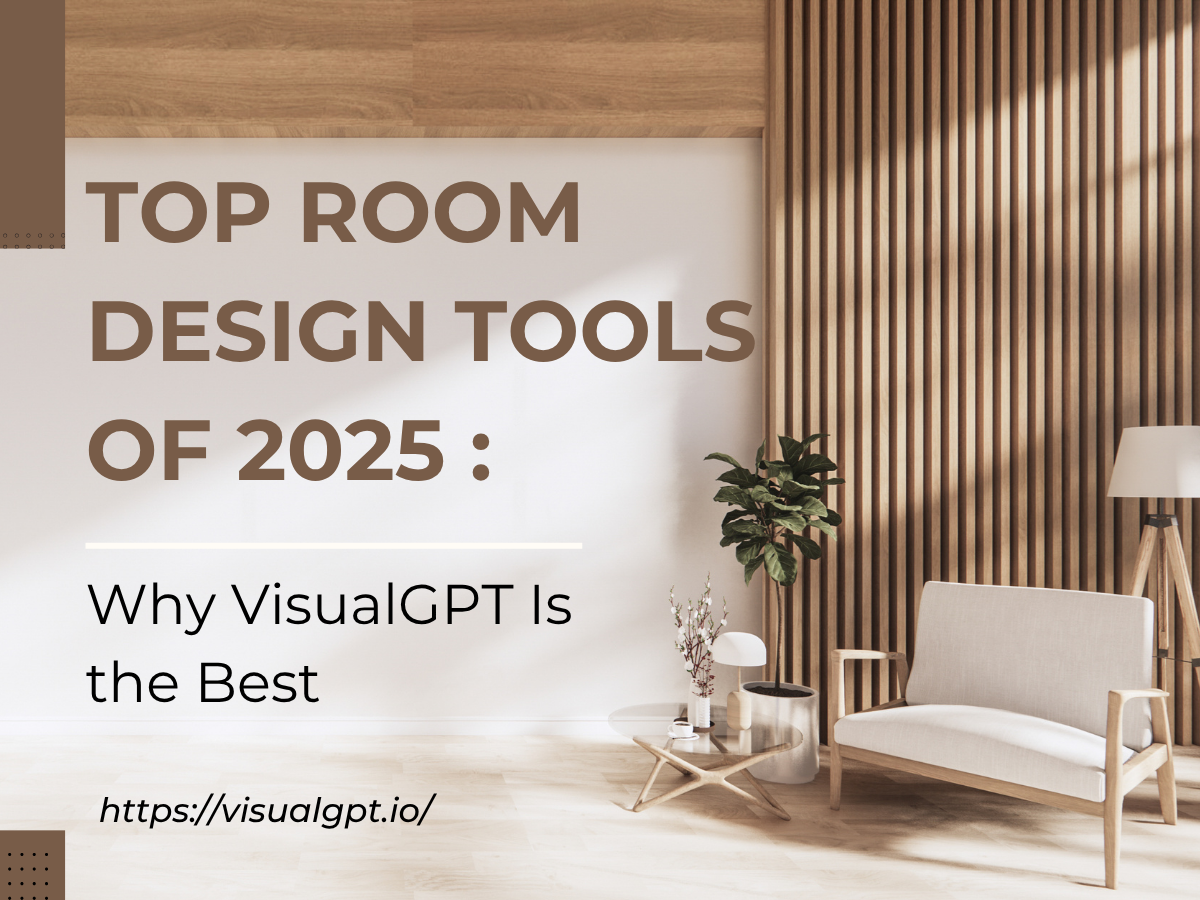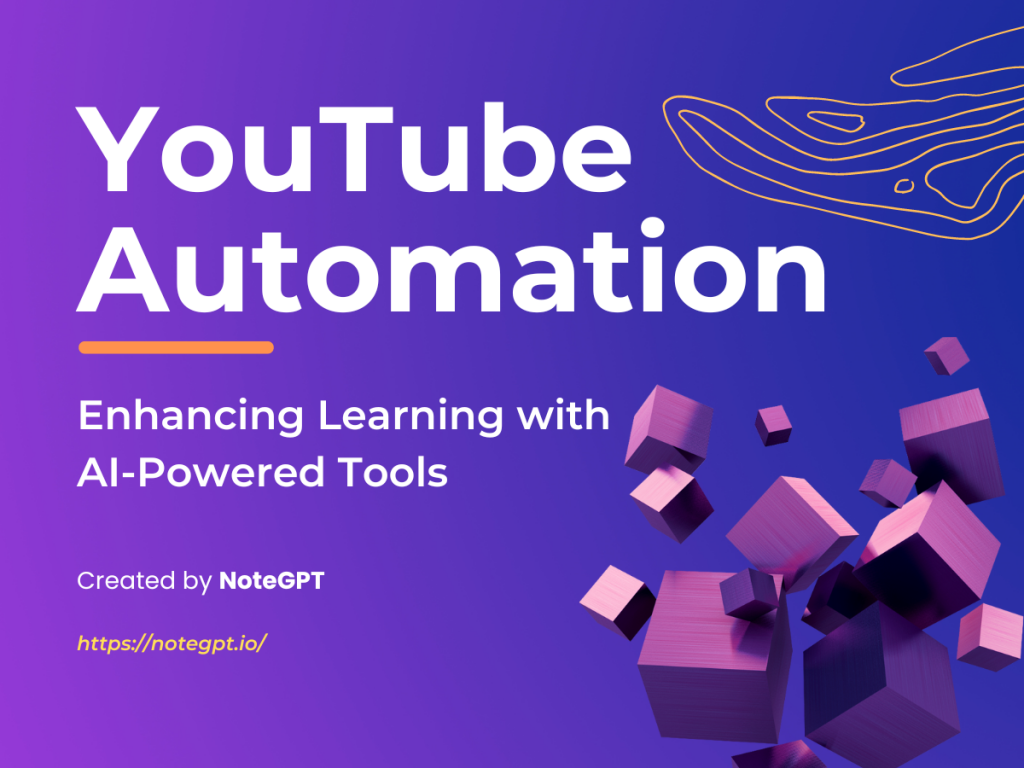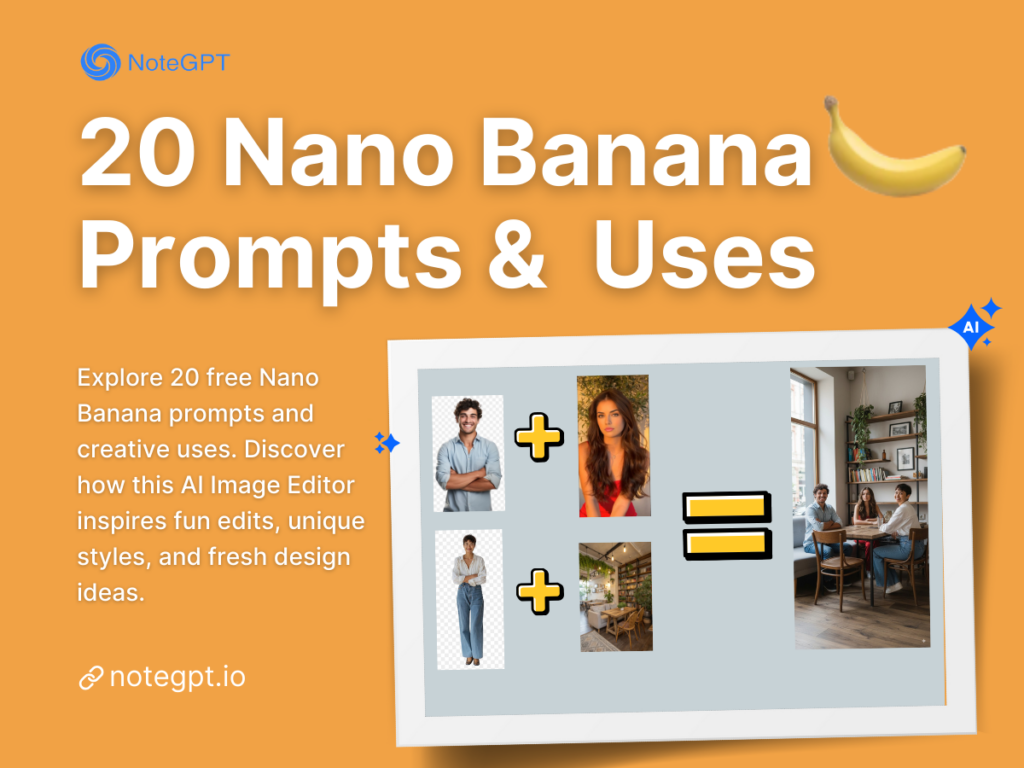Top 10 Best AI Image Generation Tools in 2025

Contents
- Why You Need an AI Image Generation Tool
- What Makes an AI Image Generation Tool Stand Out
-
Top 10 AI Image Generation Tools in 2025
- NoteGPT – The all-in-one creative assistant for generating and editing images with natural prompts.
- VisualGPT – A new-generation model focused on hyper-realistic image generation.
- Picsart AI Image Generator – Known for its mobile-friendly creative editing suite.
- Pixlr AI – A reliable and fast web-based AI art and photo generation tool.
- Canva Magic Media – Combines design templates with text-to-image AI generation.
- Adobe Firefly – Professional-grade image synthesis with strong integration into Creative Cloud.
- DALL·E 3 (OpenAI) – Advanced prompt understanding and stylistic control.
- Midjourney – Popular among artists for cinematic and concept-art aesthetics.
- Stable Diffusion XL – Open-source and highly customizable for developers and artists.
- Runway ML – Tailored for video creators and designers with AI-powered image & video generation.
- NoteGPT — Why It Stands Out
- Tips for Getting the Best Results from AI Image Generation Tools
- Conclusion
I still remember the first time I used an AI image generation tool. I typed something like “a golden retriever wearing sunglasses on a beach in Miami”, hit “generate,” and… boom. There it was. My perfect summer dog, cooler than any photo I could have taken. That moment changed how I thought about creativity.
Now, it’s 2025 — and the world of AI image generation tools has evolved like crazy. What used to be a geeky experiment is now a must-have creative superpower for anyone — whether you’re a designer, marketer, student, or just a curious creator.
So, if you’ve ever wondered which AI image generator is the best in 2025, this post is for you. I’ve tested, compared, and used almost every major tool out there. Let’s dive in.
Why You Need an AI Image Generation Tool
Let’s be real — visuals are everything. Whether you’re building a brand, writing a blog, or pitching a new idea, people remember what they see way more than what they read.
AI image generation tools make that process effortless. You no longer need to spend hours in Photoshop or search through boring stock photos. You just describe what you imagine, and the AI brings it to life.
When I started using AI art generators, it completely changed my workflow:
- For my blog posts, I create custom visuals that perfectly match the topic.
- When designing product ideas, I can mock up concepts in minutes.
- Even for fun — like visualizing fantasy worlds or interior designs — AI makes creativity limitless.
And it’s not just about convenience. These AI image generation tools actually inspire creativity. They help you see possibilities you wouldn’t have thought of on your own. That’s the magic of human imagination meeting machine intelligence.
What Makes an AI Image Generation Tool Stand Out
Image Quality and Realism
Let’s face it: not all AI images are created equal. Some tools still produce weird hands or melted faces (we’ve all seen them). But the best AI image generators in 2025 have gotten unbelievably good at realism — lighting, depth, reflections, even artistic texture.
When I compared NoteGPT, DALL·E 3, and Midjourney side by side, the difference came down to one thing — how well the tool understands the intent behind my prompt. A great AI generator feels like a real artist who “gets” your vision without needing 10 edits.
Customization and Style Diversity
The top tools today go far beyond “make me a pretty picture.” You can choose art styles, lighting moods, camera angles, even facial emotions. Some, like VisualGPT and Stable Diffusion XL, allow super-fine control — turning your text into cinematic shots, anime illustrations, or minimalist flat designs.
That’s where NoteGPT impressed me most. I could switch from realistic portraits to dreamy watercolor with one prompt. It feels like having a studio of digital artists on call, ready to follow your creative mood.
Speed, Accessibility, and Integration
Creativity doesn’t wait. One thing I’ve learned using these tools daily is that speed matters. A good AI image generator should produce high-quality results in seconds, not minutes.
Cloud-based tools like Pixlr AI and Canva Magic Media win here — they’re fast, intuitive, and don’t crash your browser (a small miracle). And the best ones integrate seamlessly with writing, design, or video workflows — like NoteGPT does with its ecosystem of writing, PDF, and audio tools.
Ethical Use and Copyright Safety
This part’s huge. As AI art goes mainstream, copyright concerns are everywhere. You don’t want your generated image flagged for using someone else’s work.
That’s why I value tools that emphasize ethical datasets and transparent licensing. Adobe Firefly, for instance, is trained on licensed content from Adobe Stock — a major win for professionals who care about commercial safety.
It’s refreshing to see tools like NoteGPT and Firefly leading this movement — building trust as AI becomes part of our creative toolkit.
Top 10 AI Image Generation Tools in 2025
After months of experimenting, testing prompts, and comparing features, here’s my honest list of the top 10 AI image generation tools that truly stand out in 2025.
1. NoteGPT
My go-to creative assistant. NoteGPT’s AI Image Editor and generator work seamlessly together to make image creation fast and intuitive. What makes it stand out isn’t just how well it understands natural prompts, but how easily you can edit results right after generation.
The built-in editor supports batch processing and offers ready-made prompts for quick fixes — you can remove watermarks, erase objects or text, enhance image quality, upscale, or even change outfits in one click. Everything happens with lossless AI completion, so your images stay crisp and natural.
What really sold me is how it connects with NoteGPT’s writing and audio tools — I can write a blog, generate matching visuals, polish them with the AI editor, and even turn the whole thing into an audio post without leaving the page. It’s perfect for creators who love an all-in-one ecosystem.

2. VisualGPT
If realism is what you crave, VisualGPT is the new rising star. It uses advanced diffusion models to produce photos so lifelike that I once had to zoom in to check if it was AI or real. It handles human anatomy, complex backgrounds, and cinematic lighting beautifully.

3. Picsart AI Image Generator
Picsart’s AI generator shines for mobile users. You can literally sketch an idea on your phone and transform it into a stunning image. Plus, its editing suite lets you tweak details right after generation — no need for extra software.
It’s one of the most accessible AI image generation tools out there for beginners.
4. Pixlr AI
Fast, web-based, and surprisingly creative. Pixlr AI feels like a lightweight version of Photoshop meets AI art. It’s great for quick social media graphics or professional-looking mockups.
What I love is its “Smart Adjust” feature — it refines color tones and composition automatically, giving your AI images that final polish.
5. Canva Magic Media
Canva Magic Media is perfect if you already live inside Canva’s ecosystem. You can type a prompt like “modern office in Tokyo with minimal style” and drop it right into your design.
For marketers, it’s a dream — fast image generation directly inside your presentation, ad, or social post. It’s not the most artistic tool, but it’s incredibly practical.
6. Adobe Firefly
The professional’s favorite. Firefly integrates AI image generation directly into Adobe’s Creative Cloud — meaning your generated content is automatically safe for commercial use.
I use it for client work when licensing and quality both matter. The prompt controls are more advanced than ever, allowing detailed edits with natural language (“make it more cinematic” actually works!).
7. DALL·E 3 (OpenAI)
DALL·E 3 remains the OG benchmark for creativity and concept understanding. It’s deeply integrated into ChatGPT now, which means you can have a conversation with the AI as you refine your image.
I often use it for brainstorming — it’s great at interpreting nuanced prompts and experimenting with abstract ideas.
8. Midjourney
Ah, the artist’s darling. Midjourney still rules for aesthetic quality. Its images have that dramatic, cinematic energy that makes you stop scrolling.
The downside? It still runs mostly on Discord, which isn’t ideal for everyone. But for concept art, fantasy design, or storytelling visuals — it’s unbeatable.
9. Stable Diffusion XL
For open-source enthusiasts, this is your playground. Stable Diffusion XL gives you full control — you can customize models, styles, and outputs endlessly.
It’s a bit more technical, but for developers and digital artists, it’s pure creative freedom.
10. Runway ML
Runway isn’t just about image generation — it bridges into AI video generation too. If you’re a content creator or filmmaker, this one’s worth watching.
I’ve used it to turn static AI images into short animated clips. The integration between still and motion generation is seamless, making it a unique entry in this list.
NoteGPT — Why It Stands Out
When people ask me which AI image generator I actually use every day, my answer is simple: NoteGPT. Not because it’s the flashiest, but because it feels human-friendly. It doesn’t bury you in technical settings — it just understands what you want and delivers fast, beautiful visuals.
After testing more than 15 AI image generation tools, I found NoteGPT strikes the perfect balance between creativity and precision. Here’s why it stands out.
Natural Prompts, Stunning Results
Some image generators make you write prompts like a coder — with endless parameters like “8k, ultra-realistic, cinematic lighting.”
With NoteGPT, you can just describe your vision in plain language:
“A woman smiling under golden sunlight, vintage tone.”
That’s all it takes. The AI understands your creative intent and brings it to life with impressive accuracy and emotion.
During one test, I asked for “a cozy reading nook with a cat on a window sill at sunset.” The result looked like it came straight out of a lifestyle magazine — warm tones, soft shadows, and a peaceful mood.
That’s what makes NoteGPT special: it doesn’t just create images, it captures feelings.

AI Image Editor: Smart, Detailed Control
What takes NoteGPT further is its built-in AI Image Editor. Once your image is generated, you can enhance or modify it instantly — no need to start over.
You can:
- Remove watermarks or backgrounds
- Erase unwanted objects or text
- Upscale resolution without quality loss
- Adjust lighting or composition with prompt-based editing
- Even try creative effects like AR demos or outfit swaps
It’s not about filters — it’s intelligent refinement. The editor uses AI to fill in details naturally, preserving clarity and depth instead of blurring over changes. For designers or marketers who need polished visuals fast, this is a game-changer.

Flexible Output and Quality Preservation
Unlike most tools that just give you a single JPG, NoteGPT lets you export in multiple formats and resolutions. You can save optimized images for web or high-definition assets for print — all without losing detail.
This makes it ideal for bloggers, teachers, and creatives who need professional visuals that look sharp everywhere.
✅Key Takeaway:
NoteGPT isn’t just another AI image generator — it’s a creative partner. With its natural prompt understanding and powerful AI Image Editor, it gives you control without complexity and results that truly reflect your imagination.
Tips for Getting the Best Results from AI Image Generation Tools
After using these tools for years (and making a fair share of weird, cursed images along the way), here are my hard-earned tips to help you get the most from any AI image generator in 2025.
1. Write Prompts Like You’re Talking to a Person
Don’t overthink it. The best results often come from clear, natural language.
Instead of “hyperrealistic fantasy portrait with bokeh,” try “portrait of an elf queen in soft glowing light.” The AI understands tone, mood, and context much better than you’d expect.
2. Use Visual References When Possible
Some tools — like NoteGPT and DALL·E 3 — let you upload reference images. Use them!
If you’re trying to match a certain pose, color scheme, or vibe, a reference image can dramatically improve accuracy.
3. Experiment with Styles
Don’t stick to one aesthetic. Try cinematic, watercolor, sketch, anime, minimalist — each style pushes the AI in a different direction.
I once used the same prompt across six AI image generation tools, and each gave me a completely different interpretation. The variety was inspiring.
4. Combine Tools for Better Output
No single tool is perfect at everything.
I often generate base images in NoteGPT for concept clarity, then touch up color and composition in Pixlr AI, and finally polish with Adobe Firefly for print-ready quality.
Mixing tools can create results that feel more refined and professional.
5. Learn to Refine, Not Repeat
Instead of retyping an entire prompt when something looks off, adjust small details:
Add words like “softer light,” “more cinematic,” or “add reflection.” This helps the AI evolve your image intelligently.
6. Keep Ethics in Mind
AI art should be fun, not controversial. Avoid prompts that copy existing artists’ styles without credit, and be mindful of commercial usage rights.
That’s another reason I recommend platforms like NoteGPT and Firefly — they prioritize safe, ethically trained models.
7. Think Story, Not Just Image
Every image tells a story. Even AI-generated ones.
Before you hit “generate,” think about the message or mood you want to convey — peaceful, dramatic, mysterious? That clarity makes your prompt sharper and your results more powerful.
Conclusion
We’re living in a visual renaissance — powered not by paintbrushes, but by algorithms that understand imagination.
The best AI image generation tools in 2025 aren’t just about pixels or prompts. They’re about empowering people to express ideas faster, easier, and more beautifully than ever before.
From NoteGPT’s creative ecosystem to Midjourney’s cinematic flair and Firefly’s professional polish, each tool opens a new door to digital creativity.
Personally, I’ve found that using AI image generators doesn’t make me less creative — it makes me more curious. I explore more, experiment more, and create more.
If you haven’t tried it yet, start with NoteGPT. Play around. Type your wildest ideas — from “a panda astronaut in neon Tokyo” to “a quiet library under the ocean.” You’ll be amazed at what the machine (and your own imagination) can do together.
Because in 2025, creativity isn’t limited by skill. It’s only limited by what you dare to imagine.





